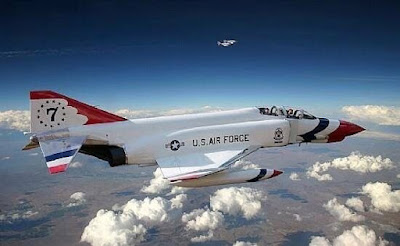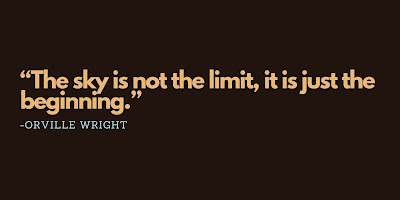Beyond Silhouettes: A Return to Writing and the Sky
Todd Burleson
Thirteen years ago, I co-founded this blog with a small group of passionate writers. What began as a creative refuge has grown and evolved in ways I could never have imagined, thanks to those who nurtured it while I stepped away. Life swept me into a whirlwind of work, recognition, and personal challenges, leaving little time for fiction. But my love for storytelling—and aviation—never indeed left me. Today, I return to this space with immense gratitude, ready to rekindle my creative fire and share the journey that brought me back to the sky and writing.
It all began in Bitburg, Germany, in 1972. At four years old, I sat on the cold metal of an Air Force Thunderbird while rain fell around me, mesmerized by the machine that defied gravity. That moment imprinted itself on me, sparking a fascination with flight that has shaped my life ever since.
As an Air Force child, my love for the sky took many forms. My bedroom ceiling became a crowded masterpiece of model airplanes—balsa wood gliders, rubber band-powered crafts, and intricate replicas. I could often be found laying in the grass staring up at the silhouettes of military aircraft and identifying them like some people identified birds. I spent hours flying kites. Once I flew a kite for 14 hours straight, even tying it to a tree overnight so I could continue the following day. It was a pure expression of my connection to the air.
Growing up on military bases, including Wright Patterson Air Force Base, books became my first tools for understanding this connection. I devoured stories of the Wright brothers, marveling at their transformation from bicycle mechanics to aviation pioneers. Their tenacity and creativity inspired me to believe in the impossible.
In high school, I dreamed of becoming a military pilot. I quickly passed the physical requirements, but a routine colorblindness test ended my aspirations. At the time, I was told I wasn’t colorblind, but the military’s rigid standards left no room for nuance. It wasn’t until much later—about 10 years ago—that I learned the truth. I proudly served, but I was grounded.
Responding to a call from the Wright-Patterson Air Force Base Flight Science Unit for a study on colorblind individuals, I planned a research trip to Dayton to study the Wright brothers for my book and added the test to my itinerary. The day I spent at the state-of-the-art flight science center was nothing short of remarkable. I underwent rigorous tests and even brain scans. When the results were finally analyzed, the scientists confirmed I had a sporadic and nuanced form of colorblindness—so rare that they had only encountered it a handful of times. I learned I was slightly colorblind in one eye, and while this condition had disqualified me from becoming a pilot, hearing the science behind it was strangely liberating.
The day's highlight was flying in a multimillion-dollar flight simulator to train pilots for cutting-edge fighter jets. It was exhilarating and surreal—an opportunity I never thought I’d have. The team gave me a treasured memento: a challenge coin from the Flight Science Unit, a military tradition symbolizing honor and achievement. I carry it as a reminder of my journey, both the setbacks and the incredible opportunities I’ve had along the way.
As my love for aviation deepened, it became a part of my family’s story. I wanted to share the joy of flight with my children, so we attended airshows at our local airport, marveling together at aerobatic stunts and vintage planes. On one particularly special day, we could take to the skies in a small aircraft. Watching my children gaze down at our community from above was unforgettable. It was a symbolic moment for me—a reminder of the perspective and wonder that flight brings and an inspiration to continue exploring it together.
I’ve also had the privilege of experiencing history firsthand. I flew in a reproduction of the 1911 Wright B. Flyer, seated on a simple chair bolted to the wing. Feeling the rush of air and imagining myself in the Wright brothers’ shoes was humbling and exhilarating.
Then, just seven years ago, I won a raffle for a flight over Chicago. It wasn’t just a sightseeing trip—it was a chance to sit in the cockpit of a small plane. For the first time, I flew the aircraft and landed it. My hands trembled on the controls, but the experience was life-changing. It reawakened my childhood dreams and solidified my connection to the sky in ways I couldn’t have imagined.
Orville Wright became a personal hero—not only for his groundbreaking contributions to flight but also for his love of photography. Like Orville, I found joy in capturing life through a lens. My darkroom became a sanctuary, and I built a professional photography business rooted in storytelling. I was deeply moved to learn that when Orville passed away, the only photograph in his wallet was of his beloved Saint Bernard, Scipio—a simple but profound testament to his love for capturing the world around him.
For over a decade, one historical detail captivated my imagination: Orville Wright’s final flight aboard the Constellation. A man who had once flown for 12 seconds in a wood-and-cloth contraption now soared across the country in a modern engineering marvel. That juxtaposition became the seed for my middle-grade historical fiction novel, Beyond the Horizon: Where Friendship Takes Flight.
This book began as a picture book more than 13 years ago. Over time, it has evolved into something more significant—a story rooted in my lifelong passion for aviation and my admiration for the people who shaped its history.
While life pulled me away from fiction, it brought incredible experiences. In 2016, I was honored to be named School Library Journal’s School Librarian of the Year. In 2017, I published a nonfiction technical book. But fiction—my first love—remained a dream deferred. I return to it with a renewed sense of purpose and excitement.
Thank you to the writers who have nurtured this blog in my absence. Your dedication and creativity kept the spark alive, and I’m humbled to rejoin this community.
As I take this next step, I’m reminded of something Orville Wright once said: “The sky is not the limit. It is just the beginning.” Those words inspired the title of my book, Beyond the Horizon: Where Friendship Takes Flight. The book's theme is that every boundary we encounter—whether in the air or on the page—simply invites us to dream bigger, explore further, and imagine what lies beyond the horizon.
Here’s to where imagination takes flight, and here’s to the stories we’ll continue to share!





























.png)





